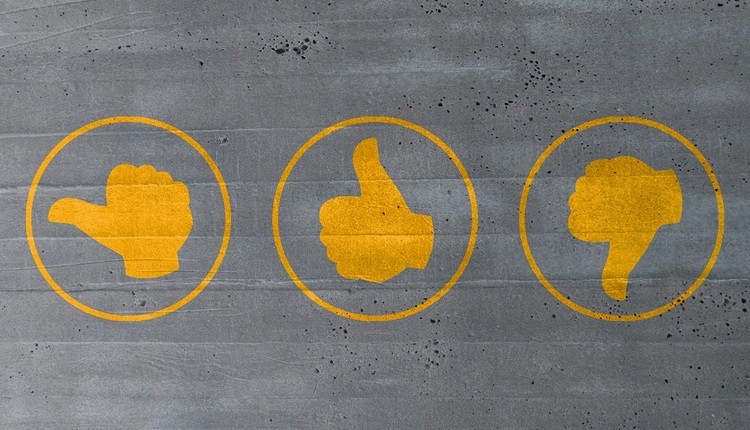Okay, fess up. How many of you can really comprehend box makers' certificates? The box maker's certificate (BMC) is found on the bottom of most corrugated shipping containers. Listed on the BMC is pertinent information that buyers, users and sellers need to understand. Without this basic understanding, you may find yourself buying, using or selling the wrong box.
The BMC provides key information regarding the specifications of the corrugated material that ultimately relates to size and weight limits of the finished box. In other words, the BMC can tell you whether the carton will adequately contain and protect the contents. The following information can be found in the BMC.
Construction: This states whether the box is constructed with single wall, double wall or triple wall corrugated fiberboard. Single wall is constructed using a fluted medium between two sheets of linerboard. Double wall is constructed from three sheets of linerboard and two fluted mediums, and triple wall consists of four sheets of linerboard and three fluted mediums.
Basis Weight: The combined weight of linerboard in single wall, double wall and triple wall corrugated fiberboard, not including the weight of the fluted medium, is expressed in pounds per thousand square feet. Basis weight directly contributes to the containment strength of shipping containers. The higher the basis weight, the greater the bursting strength (tensile strength).
Strength: This specifies the strength rating of the corrugated material in either burst or edge crush strength. Burst strength is the measurement of the tearing and tensile strength as well as the resistance of a material to burst, expressed in pounds per inch. Edge crush test (ECT) is a measurement of the edgewise-compressive strength of the corrugated board, expressed in pounds per inch. This property relates to the top-to-bottom compressive strength of corrugated shipping containers whereas burst strength relates more to containment properties.
So what is the difference between burst and edge crush? There is one major, significant difference between burst strength and edge crush test corrugated fiberboard: basis weight. You will note the BMC that specifies ECT does not have the basis weight requirement specified. Therefore, box manufacturers have more latitude to design and manufacture boxes.
The edge crush value is primarily achieved through the flutes of the corrugated fiberboard. Vertically-oriented flutes act as columns and provide compressive strength. Therefore, box manufacturers can lower the basis weight when designing boxes and still achieve the required edge crush value. As a result of the lower basis weight, the finished box has less containment strength because the corrugated fiberboard material has less tensile strength.
In general, burst strength is the more appropriate measure for heavy or dense items (to help ensure they don't tear the carton wall), whereas ECT is more appropriate for items requiring more crush resistance than containment strength. The type of void-fill or bracing used inside the box may have a significant impact on carton performance and the only way to determine which is "best" is to conduct pre-shipment testing.
Size Limit: The size limit specified on the box maker's certificate refers to the maximum outside dimensions of a finished box when the length, width and depth of the box are added together. Size limit is important because as package size increases, typically, the overall contribution to strength decreases.
Gross Weight Limit: This indicates the maximum weight and contents that the box is designed to contain. However, this does not mean that you can automatically load the box up to its gross weight limit and expect it to make it to the destination damage free. A number of factors must be considered to help ensure adequate containment strength and product protection. Product form (fluid or solid in nature) and product characteristics are two examples of critical factors to consider.
Mode of transportation is also a key factor. Are the packages being shipped in a palletized environment (non-dynamic) or are they being shipped via small-parcel carriers (dynamic)? It is the author's opinion that the box maker's certificate is more applicable for motor and rail freight shipments and less applicable for small-parcel shipments. A study is currently being conducted to evaluate the gross weight limits and their applicability for small parcel shipments.
The box maker's certificate provides critical information that when fully understood and used, can help ensure the product's complete protection during transit. It is also important to fully understand the differences between burst strength and edge crust test. A switch from burst strength to edge crush test containers may result in higher product damage risks due to a potential loss of 10% to 15% of the box's containment strength. Before making any changes to your packaging system, it is highly recommended to conduct all performance testing in accordance with industry recognized test standards, such as the International Safe Transit Association (ISTA) and American Society for Testing and Materials (ASTM).
Chad Thompson is a senior packaging consultant for UPS Professional Services. He is a certified packaging professional specializing in providing package design, testing and consulting services to meet clients' distribution packaging needs. He can be reached at 708-387-4562 or via e-mail at wla1ckt@ups.com.











